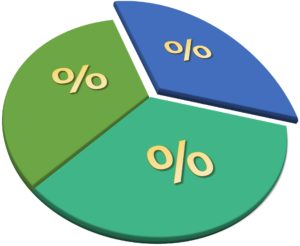 One of the most vexing issues facing retirees is deciding on an asset allocation and withdrawal rate that minimizes the risk of eventually running out of money. Conventional wisdom suggests that over time you should steadily decrease the percentage of stocks in your portfolio throughout your retirement. However recent studies indicate that the opposite may be a better approach.
One of the most vexing issues facing retirees is deciding on an asset allocation and withdrawal rate that minimizes the risk of eventually running out of money. Conventional wisdom suggests that over time you should steadily decrease the percentage of stocks in your portfolio throughout your retirement. However recent studies indicate that the opposite may be a better approach.
Wade Pfau and Michael Kitces not too long ago published a study called “Reducing Retirement Risk with a Rising Equity Glide Path.” Their findings run counter to the conventional wisdom that it is best to continually reduce your exposure to equities throughout retirement. They compared the results of a steadily increasing exposure to stocks during retirement, keeping the allocation constant, and steadily decreasing exposure to stocks. What they found is that the strategy that best minimized the risk of running out of money was starting retirement with a low percentage of stocks (something like 30%) and then steadily increasing that percentage during retirement (to approximately 60%).
This seems counter intuitive, but upon further analysis it makes sense. A lot of the risk related to making your retirement portfolio last throughout your lifetime relates to the timing of stock market declines. If you encounter a big stock market decline early in your retirement, the impact can be significant. It might take years to make back what was lost in that early period. In the meantime, you’ll have to lower your withdrawal rate. However, if the stock market performs well during your early years of retirement you’ll likely be so far ahead of your projections that running out of money is no longer a factor, even if a big decline happens later. Eventually you get to the point where you are really investing money that will primarily be passed onto heirs who have a longer time horizon.
Thus, if you start with a low percentage of stocks and encounter a big decline early you will have minimized the impact of the decline. As you increase the percentage of stocks going forward you’ll take advantage of the market recovery. On the other hand, if the market does well early in your retirement you can safely take on the additional risk in the later years.
The point at which you want to be most conservative with your portfolio is right around the time of retirement. The shape of a graph representing the percentage of a portfolio invested in stocks might look like this:
Instead of this:
